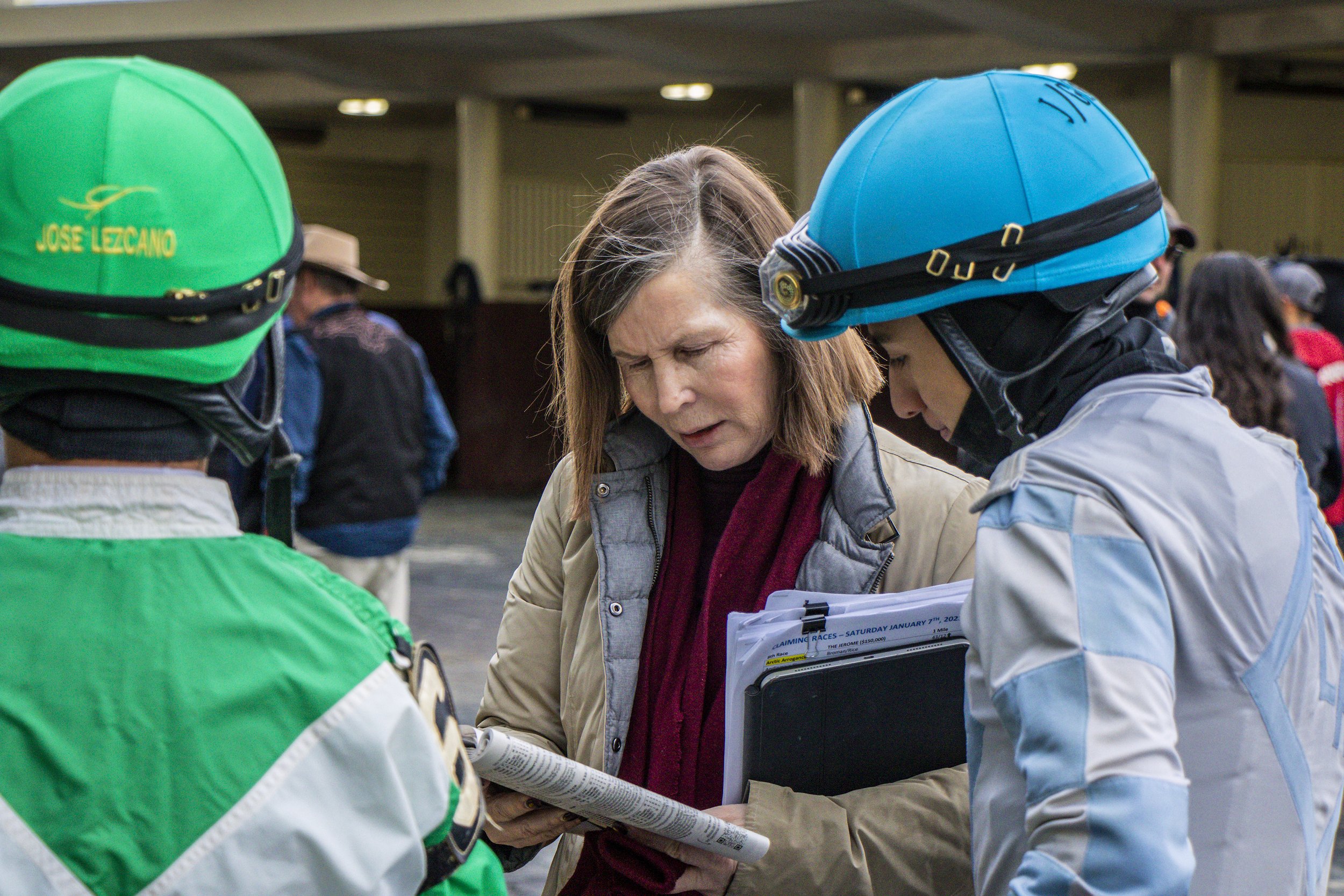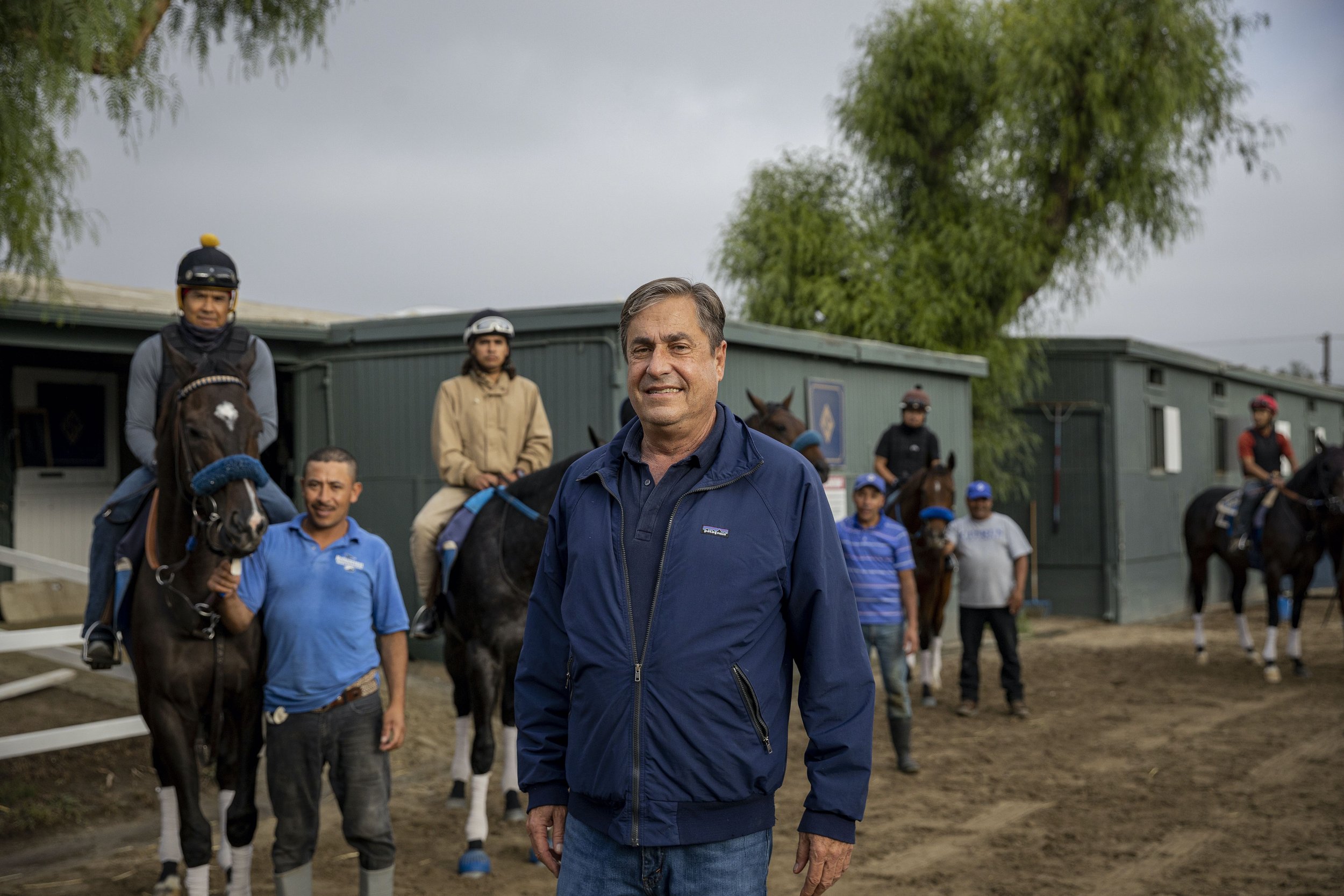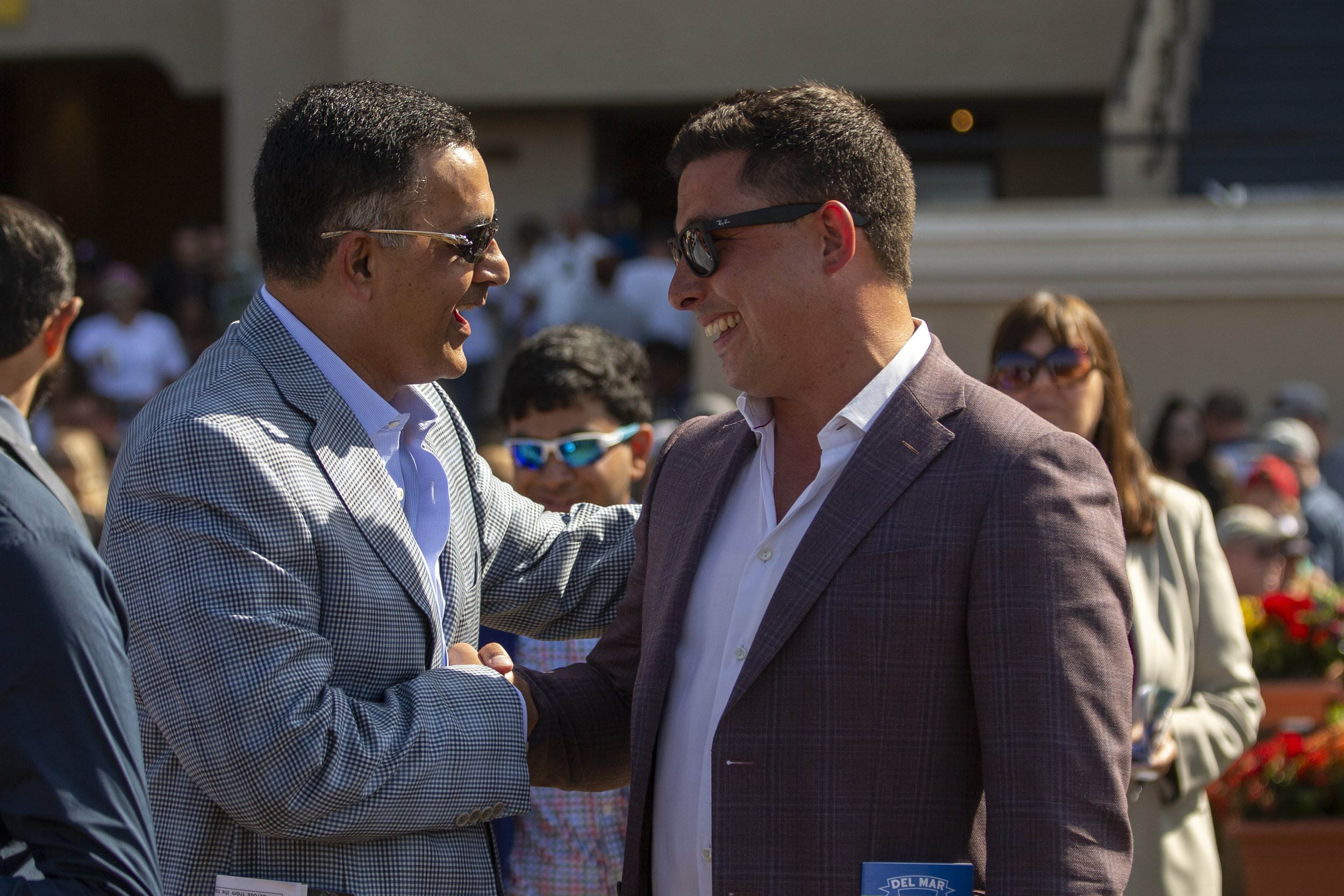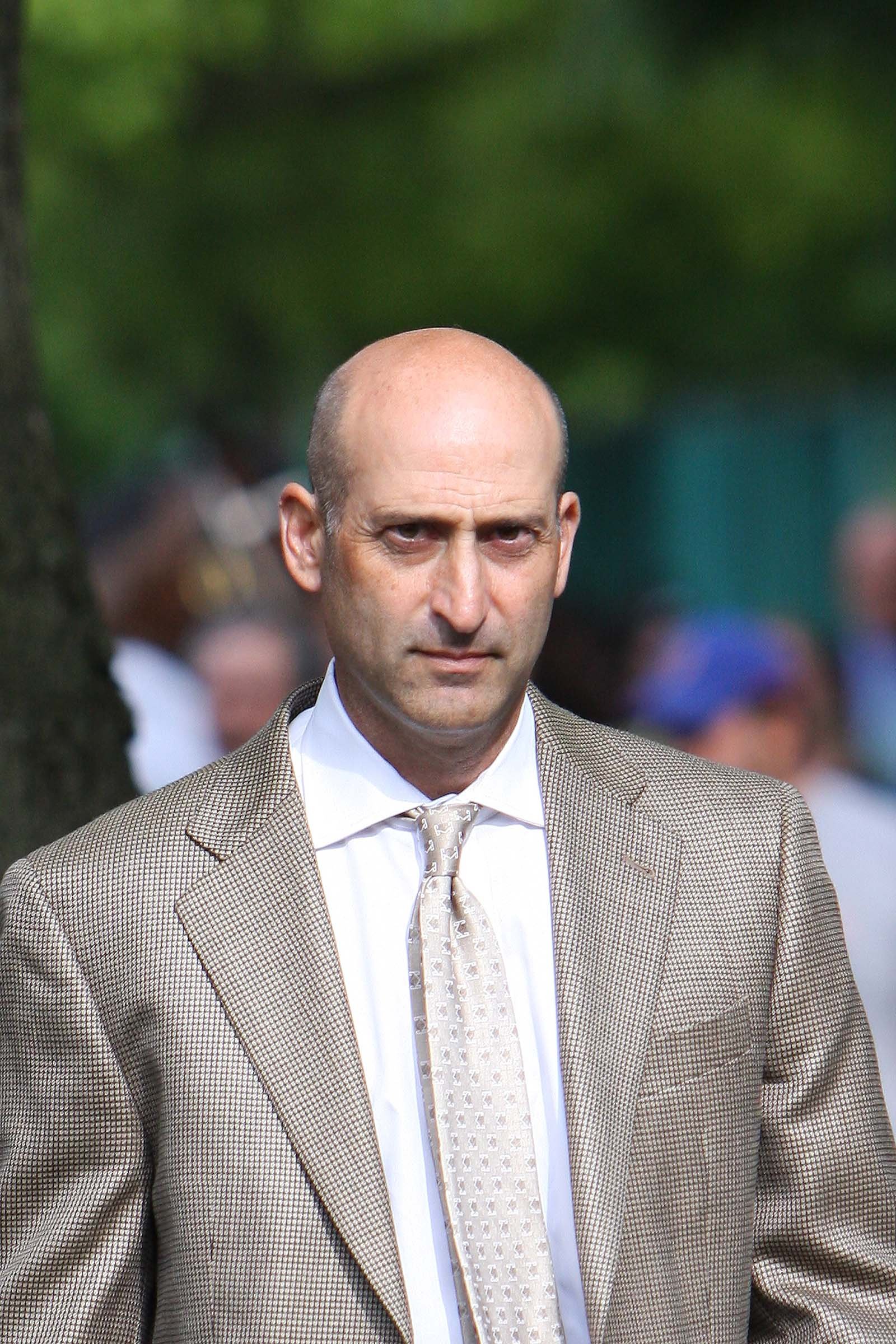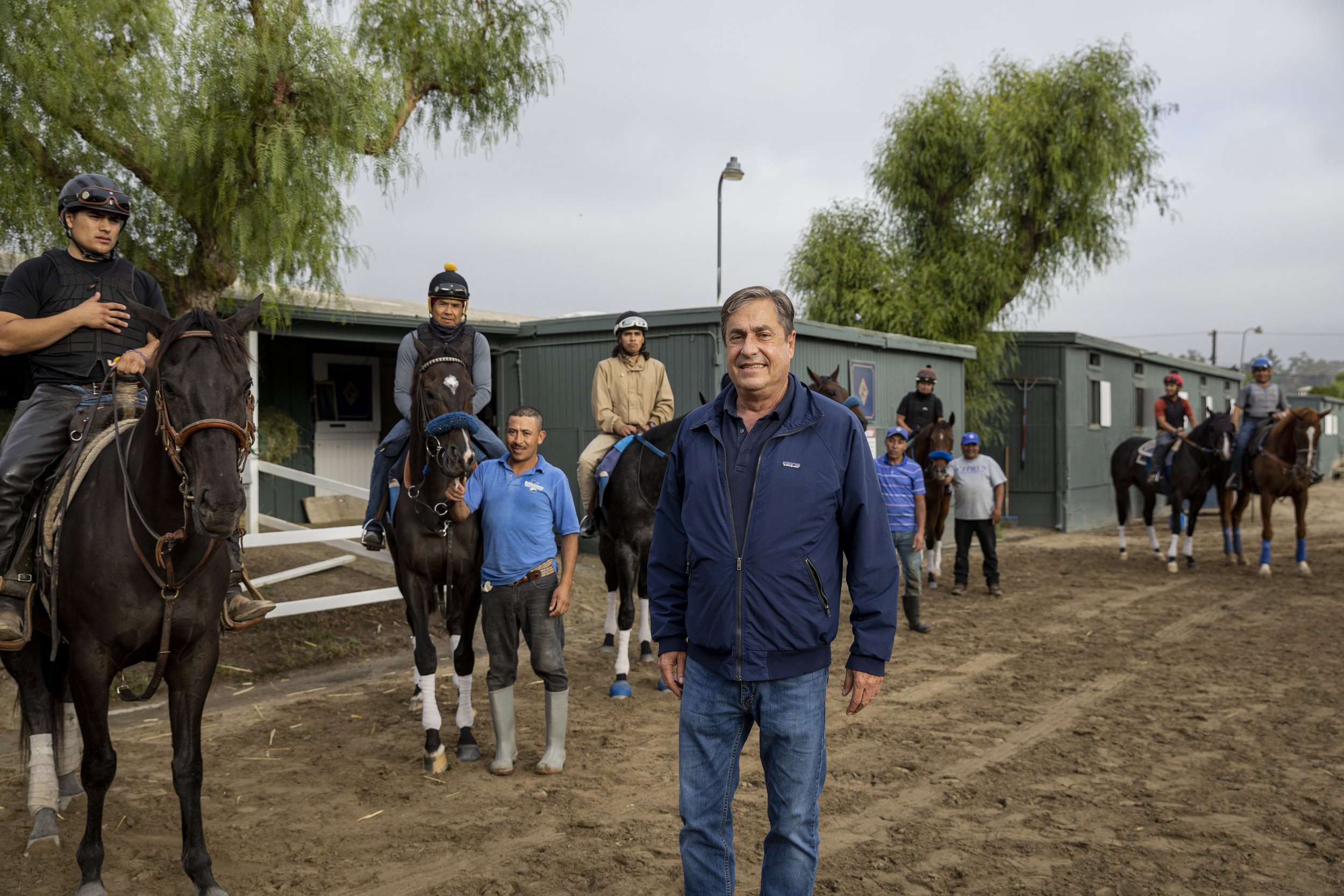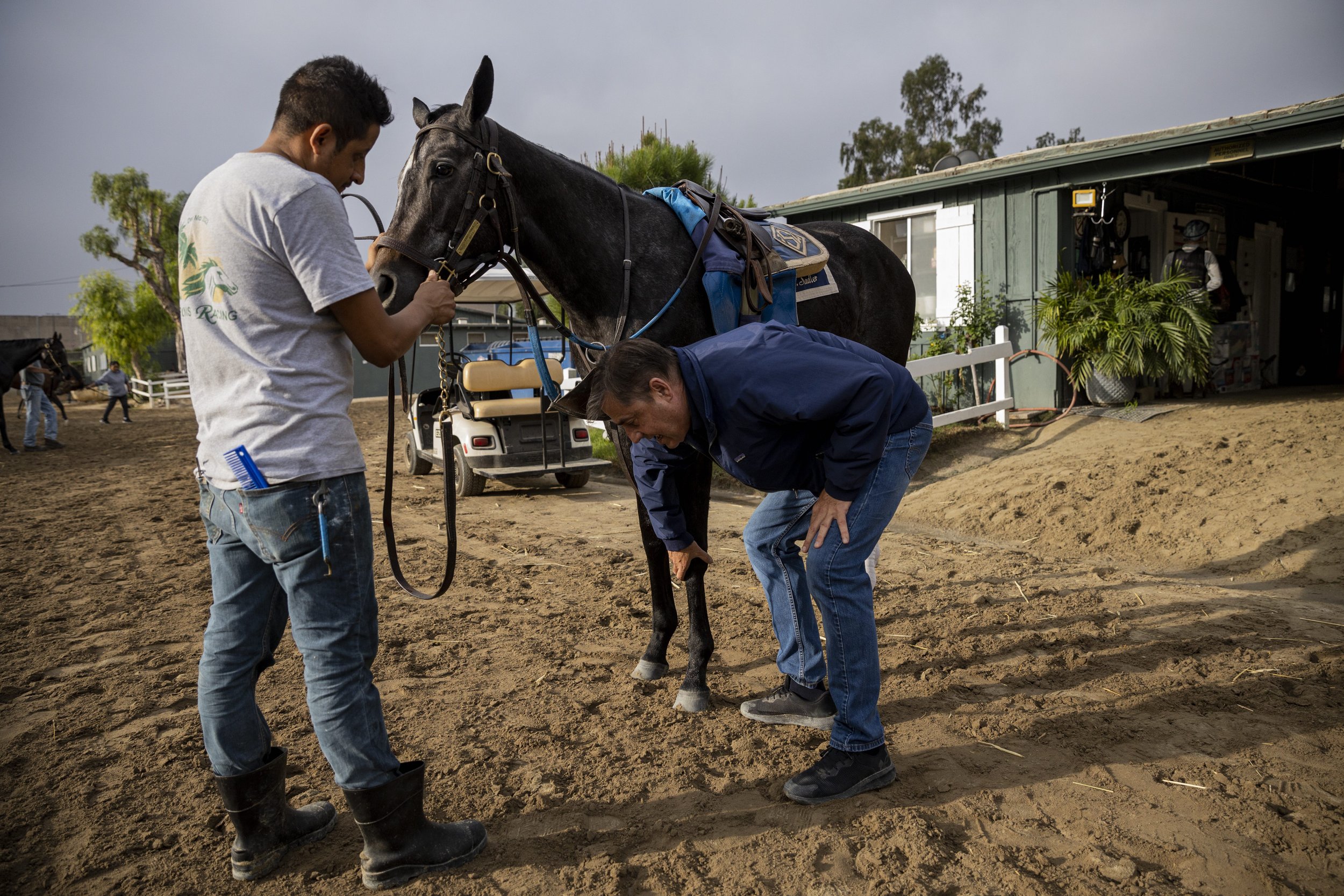#Soundbites - What do you look for when you evaluate a yearling at sales, and are there sire lines that influence your opinions?
Linda Rice
Linda Rice
I look for a good shoulder, and usually that will transcend into a great walk, an athletic walk. I do that for the length of stride. I like to buy young mares. Of course I have preference for some stallions I have had success with like City Zip. And then stallions everybody likes: sons of Into Mischief, sons of Curlin, sons of McLain’s Music. I’ve done well with them. If they have a great shoulder and a great walk, I’ll take a shot on an unproven stallion.
Brad Cox
The first thing, from a physical standpoint, is you have to consider his size. Is he too big or too small? As far as sire lines, you’re looking for signs. You totally have to have an idea what the yearling will look like. Will he look like his sire? You pay attention.
Graham Motion
Graham Motion
I think many of us get influenced by stallions’ progeny that we have trained before. There are other ones that we avoid if we haven’t done well with a sire’s prodigy. I think the one thing I look for is athleticism in general. I’m not overly critical of conformation.
John Sadler
John Sadler
We’re looking primarily for dirt pedigrees for California. I have a good idea what works here, what doesn’t work here. Obviously, I’m partial to some of the sires I trained, Twirling Candy, Accelerate, and Catalina Cruiser who’s off to a very fast start. On the conformation side, I look for a well-conformed horse that looks like an athlete. As an experienced trainer, you look for any little things. You learn what you can live with or without. Then, obviously, I’m looking for Flightlines in a couple of years!
Simon Callaghan
Simon Callaghan
Generally, I’m looking for an athlete first and foremost. Conformation and temperament are two major factors. Yes, there are sire lines I like—not one specific one. Certainly it’s a relatively small group.
Tom Albertrani
Tom Albertrani
I’m not a big sales guy, but when I do go, I like to look at the pedigree first. Then I look for the same things as everyone else. Balance is important. I like to see a horse that’s well-balanced, and I like nicely muscle-toned hindquarters.
Michael Matz
One of the things, first of all, is I look at the overall picture and balance. We always pick apart their faults, then what things that are good for them. You look for the balance, then if they’re a young yearling or an older yearling. Those are some of the things I look at. If you like one, you go ahead. There are certain sires if you have had luck with them before. It all depends on what the yearling looks like. I would say the biggest things I look at are their balance and their attitude. When you see them come out and walk, sometimes I like to touch them around the ear to see how they react to that. That shows if they’re an accepting animal.
John Sadler - Trainer of superstar racehorse Flightline
Article by Annie Lambert
Trainer John Sadler has aimed at a career in the equine industry since he was a small child. His resolve landed him exactly where he needed to be.
Who knew that a little boy’s encounter with horses in a field adjacent to a family’s summer vacation home would set a course toward a lifelong career with horses? That young boy was California-based trainer John Sadler.
It was Sadler’s connection to horses that kept him on course to become a successful horseman. “I always wanted to work with horses,” he recalled.
The trainer’s equine experiences evolved from simple riding lessons to appease his mother, to showing hunters and jumpers and then, on to a natural progression within the Thoroughbred racing industry. Each chapter of Sadler’s equine journey has been fruitful.
He was an outstanding rider in the show ring and now sits among the best trainers in the racing industry. As of October 11, 2022, Sadler has amassed earnings of $141,058,895. Horses like Accelerate, Stellar Wind, Switch, Higher Power and current superstar Flightline have greatly enhanced his coffers.
While Sadler seems a humble guy, his accumulating milestones are worth boasting about. The kid attracted to horses at first glance is definitely making the most of his passion.
Lessons Learned
John Sadler - jumping - mr cove
Sadler was born in Long Beach, California, but was raised in nearby Pasadena. His family was summering at a house near the beach in Palos Verdes when his equine passion bloomed.
“We spent one summer at the beach, and some people had horses in their backyard,” Sadler recalled. ”I told my mother I’d like to ride the horses, but she told me I had to take lessons if I wanted to ride. So, when I was very young, I took riding lessons in Palos Verdes.”
When summer ended, the new equestrian wanted to keep up with his lessons and found himself riding at Flintridge Riding Club in La Canada, in the shadow of the Rose Bowl, all through high school. Riding with Jimmy A. Williams, a renowned horseman, helped Sadler excel at riding show horses.
Dianne Grod, a respected trainer and rider of Gran Prix jumpers now retired and living in Ocala, Florida, remembered Sadler’s ability. “He rode hunters well, he rode the jumpers well and he equitated well,” Grod said. “And back then, everybody did all three divisions on the same horse.”
During his high school years, Sadler competed for a position on the United States Equestrian Team during their West coast screening trials held at Foxfield Riding School at Lake Sherwood, outside of Los Angeles.
During Sadler’s show jumping era, his parents became involved in Thoroughbred racing on a small scale.
“My parents had a fractional interest in a couple of racehorses with a group from Pasadena and San Marino,” Sadler explained. “Impossible Stables, Inc., was a fun group of people who were social friends. I would go out to the track with my parents and watch the horses run, so I got involved with the track early.”
Sadler admits the years have somewhat run together, making exact dates hard to recall, but during a couple of high school summers he found himself walking hots at Del Mar.
His racetrack career had begun.
Racetrack Basics
With his family spending a couple summers near Oceanside, Sadler headed to the track and a job walking hots for now retired trainer Tom Pratt, (Chiapas, Mexico). Pratt was a stepping stone on Sadler’s career path.
“He was a good and talented employee,” Pratt offered. That was high praise for a teenaged hotwalker learning the ropes.
Once he graduated high school, Sadler headed to the University of Oregon in Eugene. The Liberal Arts/English major self-admittedly that he “was not really a focused student.” He did, however, confess to taking half of the fraternity house to Portland Meadows racetrack one day, which was “a good trip.”
It was not hard to believe that the young horseman made a beeline back to the track following college. His learning was more focused around the horses, and he began studying the industry from within.
Sadler went to work as an assistant to veterinarian Dr. Jack Robbins during the 1970s. Robbins, who passed away in 2014, remains an iconic figure in the history of racing.
“I was his assistant for a couple of years,” Sadler said. “I always credit him a lot; I learned a lot from him. He was a great guy…a successful owner, a very successful veterinarian and he was one of the founders of the Oak Tree Racing Association. Not only did he have the veterinary knowledge, he had a good overview of the whole game.”
Sadler did not give serious consideration to becoming a veterinarian, but he did learn a lot from Robbins and the doctor’s top tier clientele.
“It was just fun to go into all these barns, every single day,” Sadler reminisced. “You’re talking about names like Noble Threewitt, Lester Holt, Joe Manzi, Ron McAnally, Gary Jones, Warren Stute, John Sullivan, Buster Millerick…I mean, all the guys that were kind of the backbone of California. I always tried to take something from all of them—all of those great trainers.”
The Conditioner
After working for Robbins, Sadler went to work for David Hofmans as an assistant trainer for a year or more. “There is no nicer person than Dave,” Sadler recalled. The boss also appreciated his assistant.
“He was great—a real help to me,” Hofmans said of Sadler. “Working with Jack Robbins gave him an overall picture of what was going on [with veterinary issues]. Dr. Robbins worked for many people, so John got to learn and understand medications and stuff. John was a very smart guy, very astute, and he paid attention to detail. He was great, and I was sad to see him leave.”
In about 1978, Sadler had the opportunity to oversee the late Eddie Gregson’s Northern California string—his first job training on his own.
“Eddie had a lot of horses at that time and was looking to have a trainer up north,” Sadler explained. “He proposed the idea of me going up there on his behest; I trained up there for a year or a year and a half.”
Tom Pratt decided to retire about that time and kindly offered Sadler an option of taking over a few of his horses.
“Pratt said he had four or five horses that I could train,” Sadler said. “I came back to Southern California and of the 30 horses I had up north, about four or five were good enough to come down here, so that’s how I got started here. These guys were all so good to me.”
Pratt’s trust in Sadler was evident.
“When I quit training, I turned over most of my clients to him,” he recalled. “I also bought a few horses with partners and gave him those to train. I had confidence in him and was happy to give him a big leg up to what has become a very successful career.”
Keeping Course
His first year as a licensed trainer Sadler ran Gregson’s horses as well as a few starters of his own. His 1978 Equibase records showed four starters with one running third and earnings of $2,700. But, that was just the beginning. He currently has 2713 wins, and counting.
Sadler’s first winner was Top Taker (Top Conference). His record has grown exponentially over the past 44 years as a trainer. As he put it: “As the years progressed, I got better stock, obviously. It’s been kind of a natural progression.”
That progression included a slew of graded stakes winners. Accelerate (Lookin At Lucky)—the top earner to date with $6,692,480—was the Eclipse Award 2018 Champion Older Dirt Male. His accolades include winning five Gr. 1 races and the 2018 Breeders’ Cup Classic. The stallion now stands at Lane’s End Farm in Kentucky. Sadler has several of his first crop two-year-olds in training.
“I’ve got four or five nice ones,” he revealed. “One ran third the other day; they are good looking prospects.”
Stellar Wind (Curlin) was a star for Sadler—being his second highest earner to date with $2,903,200. Owner Hronis Racing sold her through the 2017 Keeneland November Mixed Sale for $6 million, going to M.V. Magnier/Coolmore. Trainer Chad Brown ran her in the Pegasus World Cup Invitational Stakes (G1) the following January. The mare finished out of the money after a bobbled start in her final race.
Switch (Quiet American) earned $1,479,562 for owner CRK Stable. She was twice second and once third in the Breeders’ Cup Filly & Mare Sprint between 2010 and 2012. She was sold at the 2012 Fasig-Tipton Kentucky Fall Mixed sale for $4.3 million to Moyglare Stud Farm.
“She almost beat Zenyatta one day at Hollywood Park,” Sadler recalled. “She lost narrowly, by a head or something. One of the times she ran second at the Breeders' Cup, she was beaten by Musical Romance, who was ridden by my assistant trainer, Juan Leyva.”
Higher Power (Medaglia D’Oro) added $1,594,648 to the Hronis Racing coffers. He won five of his 20 lifetime starts, including the 2019 Pacific Classic (G1) as well as running third in the 2019 Breeders’ Cup Classic. The bay now stands at Darby Dan Farm in Kentucky.
Sadler currently has Flightline (Tapit), arguably the best dirt horse in the world, and ranked globally a close second to champion British turf star Baaeed (Sea The Stars (IRE). Flightline is (at the time of writing) five-for-five and a likely starter in the Breeders’ Cup Classic. The colt, owned by Hronis Racing, Siena Farm, Summer Wind Equine, West Point Thoroughbreds and Woodford Racing was a $1 million yearling purchase. And, he was more than worth the price.
Flightline has proven his prowess with amazing ease so far; competitors are not able to touch him. With Flavien Prat, his only jockey to date, the four-year-old won his first three starts, last year, by a total of 37 lengths.
In June this year, he won his fourth start in the Metropolitan Mile at Belmont by six lengths. His most mind-boggling win came when he dominated his rivals with a nearly 20-length victory in the Pacific Classic (G1) at Del Mar, effectively extinguishing doubts that he could go the mile and a quarter. Prat looked over his shoulder when he couldn’t hear hoof beats behind him and eased his colt to the wire.
Admirers calculate he has won his five races by a total of more than 62 lengths. Let that sink in.
Flightline may have dominated the 2021 Triple Crown series had he not been injured while being started as a two-year-old. The colt was in Ocala when the latch on a stall door compromised his hind leg.
“I wasn’t there, but it was at least six to eight inches,” Sadler said of the wound. “It was pretty deep, pretty ugly. That was one of the reasons he didn’t get to me until later.”
Flightline’s effective stride probably has a lot to do with his effortless proficiency over the racetrack. But with all his talent, the colt is not a piece of cake to train. His personality could be called cheeky, exuberant or brazen on any given day.
“He’s a very tough horse to gallop,” Sadler said. “In the barn he’s not a pussycat—he’s all horse. He’s all man, that’s for sure.”
“He really does have a big stride,” Sadler added. “He’s just one of those exceptional horses that comes along very rarely in the Thoroughbred world. I’m just trying to enjoy him every single day, because he’s that special. It’s really exciting; I feel very blessed to have him.”
Flightline’s future will be determined following his run in the Breeders’ Cup Classic. According to Sadler, the ownership group is an agreeable lot. Upon retirement, he will stand at Lane’s End Farm.
“The decision will be made after the Breeders' Cup,” Sadler confirmed. “You want to see where the horse is after that race. And it’s not like anybody has a closed mind, one way or the other. We’ll wait and see what happens.”
It seems obvious that Sadler truly enjoys horses and particularly training racehorses. His barn is a well-oiled machine, with some employees that have been with him 20 and even 30 years. His barn is a team, a group effort.
“You want to like your employees because you spend so much time with them out here at the track,” he said. “I’m really pleased—I’ve got a really good crew; I’m blessed that way. Horses are hard; there are no cutting corners—no way to take two days off. It doesn’t work that way. I think a lot of guys like the routine. They know what’s expected of them; and if they like to work, it’s a great job.”
Sadler is not a man who toots his own horn. Hofmans remembers him as “a quiet guy” who always paid attention. John Sadler’s modesty seems refreshing in such a competitive industry.
A Fast Match
California-based trainer John Sadler has many accolades to his credit. One event that has gone fairly unnoticed through the years is a match race that took place in 1991.
The race was an idea that spun out of the racing office at the time. They wanted to match the three-time Quarter Horse 870-yard champion Griswold with a Thoroughbred sprinter.
“They proposed matching a really good half-mile horse from Los Alamitos, which really dominated over there,” Sadler said. “At that time, I had three or four really good sprinters. I thought I had the right horse for it—a horse called Valiant Pete.”
The race, boasting a $100,000 winner-take-all purse, was held April 20 at Santa Anita. The race was run at a distance of four furlongs (880 yards) and is remembered as “thrilling” to the few who remember it.
An obituary for Griswold (Merridoc), who died at the age of 25 in 2011, described the action:
“…the pair raced neck and neck throughout, with the Thoroughbred leading all the way to a world record-tying clocking of 44 1/5 seconds.”
Griswold later found revenge by beating Valiant Pete in the Marathon Handicap at Los Alamitos.

